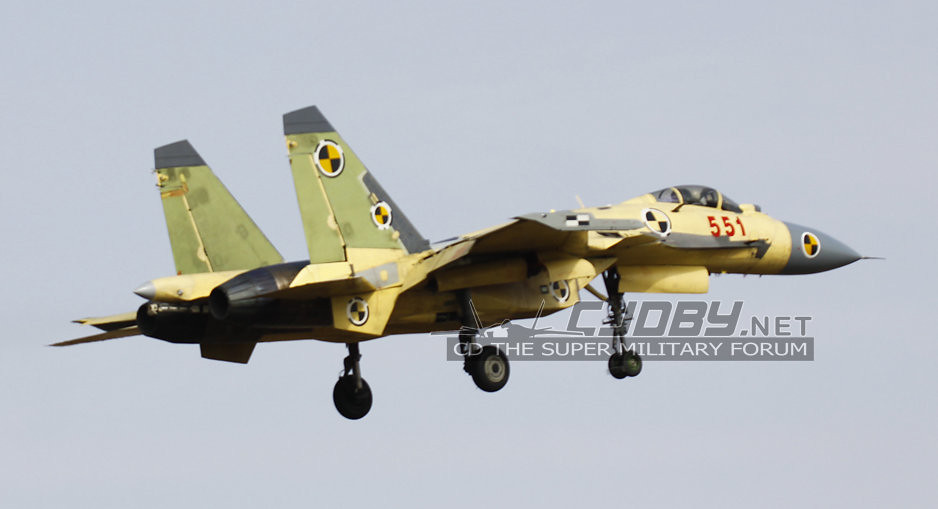I don't like how this discussion has devolved into bickering over whether or not the J-15 is a successful project. It's been two pages and no one has brought up any concrete points, and in an unsuitable thread for it, no less.
The J-15 is objectively not a good aircraft, especially if operating from a STOBAR carrier. It was a successful project only to the extent that it gave Liaoning and Shandong something resembling an air wing. Other than that, it is plagued with problems - maximum takeoff weight, reliability, size, and so forth.
The J-15 can take off with full load only from the rearmost position. Anywhere else, and you might as well have a flock of ducks for an air wing. This is probably the most severe limitation, but it can be remedied with a catapult-launched version, taking off from CATOBAR carriers. Aside from that, with only ~20 aircraft operated in the last 6 years, there has been two crashes, highlighting unspecified issues with reliability. We don't know exactly what's wrong but it's safe to guess that there are problems.
It is also a very large aircraft, which takes up a lot of deck/hangar space. If the Chinese Navy operated F/A-18s instead of J-15s, they could probably squeeze 35-40 planes onto each carrier instead of only 24-30. Of course, there is a trade-off in terms of how much fuel/ordnance each aircraft can carry and how far it can fly, so whether or not the PLAN will use a smaller airframe for its next-generation carrier-based fighter is something we'll find out soon.
At this point, the J-15 era is over. It's a successful demonstrator but its value stops there. It's finished, and the fact that no more airframes are being produced says a lot. The question now is if they will rush development of the next-generation aircraft that do not have these issues and limitations, or if they will take it slow, and restart J-15 production in the interim. The popular concensus is the former, but it is difficult to say with any kind of confidence.
I'm coming to this discussion late, but I would like to contribute my 2 cents as well.
So, the size of the J-15 is arguably its most inherent limitation, but that is the price of entry for wanting a relatively large fighter, and even a folded footprint of a J-15/Su-33 is only slightly longer than a super hornet and almost the same folded width.
But as far as J-15s payload is concerned, even launching from the forward positions on a STOBAR carrier it should be more than capable of carrying a relevant A2A payload and even an A2G or anti ship payload -- not at its full MTOW of course, but still an operationally useful load. For example, a couple of YJ-83Ks (1.4 tons total), plus 2 PL-8s and 2 PL-12s (600kg total) will still be
under half (approximately 2 tons) the max external payload of a J-15 (6.5 tons!).
Furthermore, as others have written, issues of payload when taking off from the forward positions will of course be wholly mitigated if a CATOBAR compatible J-15 variant is developed.
I don't even think the crashes with J-15 should be attributed to something inherent in the design of the aircraft rather than any combination of the following: the first carrier based aircraft developed by the Chinese aerospace industry, the high pace of training that the PLAN are likely doing for their pilots (if the introduction of 4th gen aircraft when they were knew to the PLA was any guide), as well as the overall fact that the PLAN have never operated carrier based aviation in general.
I certainly have nothing against accelerating the 5th generation carrier fighter, but even then it probably won't be entering operation before 2025 to be generous (assuming it flies sometime alter this year, which is widely predicted but not yet guaranteed).
However between now and 2025 (or later) is still at least 5 years that the PLAN will be going without any new carrier fighters if they don't produce more J-15s. Furthermore there is also 003 that will likely enter service sometime before 2025 -- i.e.: before the 5th gen carrier fighter enters service.
IMO it would make sense for the PLAN to order a relatively large batch of new build J-15s with various upgrades from the original (chief of which would be avionics, including AESA and so forth). These aircraft would be used aboard CV-16 and CV-17. These new build J-15s would have similar capabilities to J-16 in terms of avionics and payload presumably.
A batch of CATOBAR compatible J-15s could then be ordered after it, with similar upgrades, to be used aboard 003.
----
or an even better idea would be to simply order a large batch of new build J-15s with aforementioned avionics upgrades, but with
all of them being CATOBAR compatible. That would allow
all of these new build J-15s to be cross deck compatible between the STOBAR carriers (CV-16 and CV-17) as well as the CATOBAR carriers (003 and beyond), which would significantly prolong and extend their usefulness and the naval air wing's overall flexibility.






